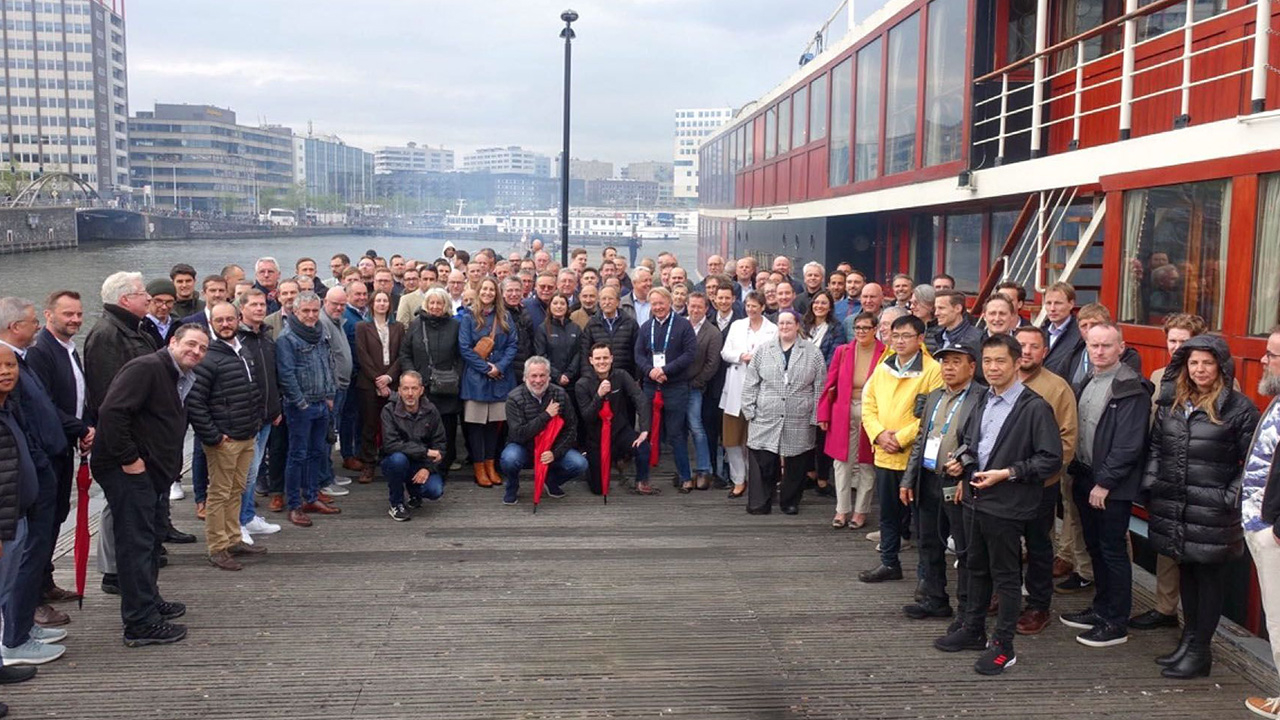UK converter installs Nilpeter and Kodak technology

UK converter OPM Group has installed a 7-color Nilpeter FA-4 UV flexo press at its main plant in Keighley, West Yorkshire. The company has also become the first UK label converter to adopt Nilpeter’s CleanInking anilox system.
Furthermore, OPM Group is the country’s first user of Kodak’s Spotless Flexographic Solution, a software package integrated with its Prinergy system designed to work with Kodak Flexcel NX plates.
The independent OPM Group was established nearly 40 years ago and now has around 60 employees. Current group production divides equally between flexible packaging and label products. Besides commodity food and beverage labels, the company serves added-value markets such as the automotive, security, data processing and industrial sectors. A new project involves producing packaging products, including laminates for pouches and sachets, with low migration properties using dedicated UV-cured inks.
The new servo-driven FA-4 has a web width of 420 mm (16.5 inches) and top speed of 175 m/minute (575 feet/minute). OPM’s version is fitted with the new energy-saving MBS-6 lamp modules from IST Metz. The press replaces an existing Nilpeter press and complements a 9-color FA-4 installed two years ago at OPM Flexibles. Formed eleven years ago as separate division, it is located outside nearby Bradford. This plant also includes a servo-driven FA-3300S and an FA-3300, both with nine UV flexo units. The group has a total of six Nilpeter presses.
OPM and its repro partner, Reproflex3, were the UK beta testers for Kodak's Spotless color management software. It accurately predicts spot color requirements to help reduce press downtime, based on Delta E Value 1 to calculate highlight and shadow color differences. Spotless leverages the extended color gamut of the Flexcel NX plates. OPM can therefore obtain 95 percent of all Pantone colors from CMYK, which meant it could specify seven flexo print units for its latest FA-4, whereas nine were required before.
‘One of our objectives in testing the system was to achieve accurate spot colors based on constant density and constant dot gain. We wanted to achieve absolute repeatability at print speeds of 120 m/minute or so,’ said Chris Ellison, managing director. ‘With high press speeds there is often the risk of slight plate lifting. You can overcome it with higher plate press pressures, but you lose repeatability.’
This factor was among the issues which led the company to adopt Nilpeter's CleanInking anilox system, launched at the recent Labelexpo Europe. It features an open/close doctor blade chamber with two blades in contact with the anilox roll. The Dynamic Print Adjustment applies pressure – measured in microns – to the impression cylinder acting against the substrate and anilox roll. The system therefore ensures constant overall inking, so avoiding ink density problems with solids even when plate lifting occurs. As a sealed anilox system, ink supply can remain in the press or stored in the chamber off-press. This arrangement facilitates easier job changes; only the plates are changed.
‘Today's trading conditions demand that converters like us must have the right kind of equipment to achieve a lean manufacturing approach to improving margins. Our latest FA-4 setup represents a phenomenal piece of technology in this respect. We can achieve a near offset standard of printing, aided by 275 line/inch screen counts from the Flexcel NX plates, at relatively high press speeds. The press control system allows us to recall all settings covering all functions, which makes the production of repeat jobs more efficient,’ Ellison added.
Pictured: Nilpeter’s CleanInking system
Click here for more stories about Nilpeter on L&L.com.
Click here for more stories about Kodak on L&L.com.
Stay up to date
Subscribe to the free Label News newsletter and receive the latest content every week. We'll never share your email address.

